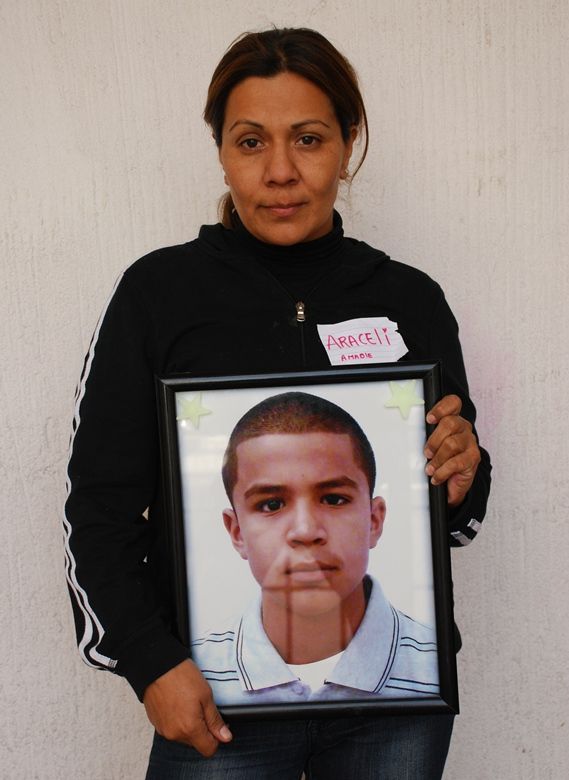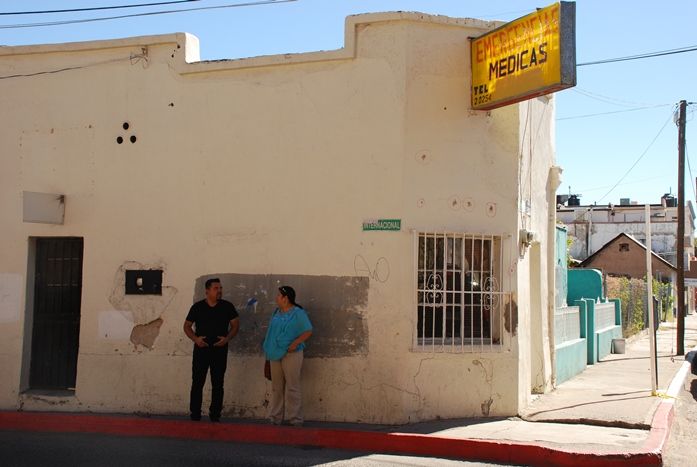CIUDAD OBREGÓN, Mexico–The Green Revolution sprang forth from this
valley of wheat farms in Sonora State, producing the food required to
feed a rapidly expanding population. But the water that has nourished
crops here for decades and sustained the Yaqui people for centuries is
threatened.
The federal and Sonora State governments are building
an aqueduct to take water from the Yaqui River to supply the mushrooming
manufacturing hub of Hermosillo, 175 miles south of the Arizona border
at Nogales. There, burgeoning automotive and aerospace industries and a
booming population have put demands on water destined for agricultural
purposes.
The aqueduct itself has pitted industrial interests and politicians against previously privileged farmers and the Yaqui.
“They’re
taking water from one river valley to supply another,” said Francisco
Ramos, a wheat farmer and one of the more than 21,000 members of the
Yaqui Valley irrigation district. “If you do this in a semi-arid state,
there are going to be problems.”
The conflict in Sonora raises water management questions that are common
across Mexico, parts of which recently experienced the worst drought in
decades. Those questions include the wisdom of moving water from one
basin to another, as already happens in Mexico City and is being
proposed for other industrial cities like León, Querétaro and Monterrey.
Other
issues include whether industry should take priority over agriculture,
especially as manufacturing expands in central and northern Mexico and
Mexican-made goods gain an increasing share of the United States market.
Building
the aqueduct, Mexico’s outgoing president, Felipe Calderón, said last
week in Sonora, propels economic development in Hermosillo “by having a
secure supply of water for industrial and commercial activities.”
The
Independence aqueduct will draw 75 million cubic meters of water from
the Yaqui River at a dam known as El Novillo to supply Hermosillo, where
the population has grown 20 percent, to more than 700,000, since 2000.
The
availability of water has decreased 25 percent over the same period,
according to the National Water Commission, or Conagua. Local observers
and aqueduct opponents attribute this to waste, including the loss of as
much as 40 percent of Hermosillo’s water as a result of leaky pipes.
“The
management problem is worse” than the problems posed by the actual
supply of water, said Nicolás Pineda Pablos, a professor of public
policy at the Colegio de Sonora in Hermosillo who takes a neutral stance
on the aqueduct.
Local politics and Mexico’s political culture,
in which municipal planning for projects seldom stretches from one
three-year administration to the next, compound the problem.
Politicians, Mr. Pineda suggests, also prefer undertaking highly visible
projects like aqueducts rather than replacing leaky pipes.
Conagua’s
director, José Luis Luege Tamargo, said that Hermosillo had no other
water sources to tap and that wells to the west, near the Gulf of
California, were contaminated by saltwater intrusions.The Yaqui River
had water to spare, he added.
But the Yaqui Valley farmers’
irrigation district has been one of the few in Mexico to be in
equilibrium, Alejandro Olea, a lawyer for the farmers, argues.
The
farmers lost the 2003 season as a result of drought and have to cede
water to residential users in Ciudad Obregón. This contrasts, Mr. Olea
said, with the situation in Hermosillo, where agriculture receives about
90 percent of the region’s water and residents are subjected to water
rationing.
The farmers have fought back through the courts,
winning early legal challenges to the environmental reviews, which Mr.
Olea contends were hastily done and did not adequately assess the area
downstream from El Novillo dam, where the aqueduct will withdraw water.
The
Yaqui also have rights to water and the land in the valley and won a
decision against the aqueduct after discovering documents saying that no
such group as theirs existed in the area – the latest indignity for a
tribe never conquered by the Spanish and expelled to the Yucatán
Peninsula in the early 1900s by Porfirio Díaz, then Mexico’s president.
The
tribe also points to past problems with diverting water from the Yaqui
Valley, where construction of an aqueduct in the early 1990s for the
purpose of supplying coastal communities caused the water table to drop
from one meter to 25 meters and oak trees to wither.
Mr. Luege
insists that the aqueduct will draw only 3.4 percent of the water
destined for agriculture and will not affect the flow below the Novillo
dam or the supply promised to the Yaqui.
Rodrigo González, a
researcher at the Sonora Technology Institute in Ciudad Obregón, rejects
those assertions, including the suggestion that sucking water from the
Yaqui River will have no downstream impact.
The proposed
withdrawal for the aqueduct “appears like a small amount when you have
lots of water,” Mr. González said. But that is seldom the case, as the
region has become drier over the past two decades, he said. Its
reservoirs also take longer to recharge, and farmers now forgo planting
summer crops, he added.
Mr. González estimates that the Yaqui
Valley, located on the cusp of arid and tropical zones, will lose more
than 18,000 acres of wheat-growing land in the valley, where some
500,000 acres are used for agriculture.
“This will guarantee Hermosillo’s future, but not ours,” he says.
Several
researchers at the Colegio de Sonora, while not endorsing the aqueduct
or water management practices in Hermosillo, say the Yaqui Valley
farmers are using water for unproductive activities like growing durum
wheat, for which the Mexican market is limited, and derive their profits
from subsidies.
“A good part of the wheat farmers in Sonora do
not reach the levels of efficiency necessary to be competitive,” Álvaro
Bracamote, a professor, and Rosana Méndez Barrón, a graduate student,
wrote in a book on wheat farming in the state. They suggested that the
abundance of water “has operated as a sort of disincentive for advancing
the process of modernizing agriculture.”
Hermosillo farmers, they
add, diversified after the North American Free Trade Agreement was put
into effect in the mid-1990s and now grow crops like nuts, table grapes
and Asian vegetables, making more than three times as much money per
hectare (equivalent to 2.5 acres) as Yaqui Valley wheat farmers.
These
farmers have shared little of their allotted water with residential
customers in Hermosillo, however, leaving the region with a decision –
one that other cities in Mexico also will have to face.
“If you want to have big-city growth, you can’t also have agriculture,” Mr. Pineda says.






